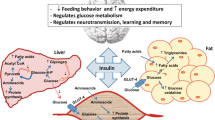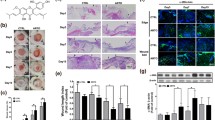Abstract
Lifestyle diseases such as diabetes and arteriosclerosis are rising in the increasingly aging society, and the number of patients with daily intake of glucose-lowering medication has also increased. Interestingly, knowledge about oral antidiabetics with regard to wound healing is scarce. Therefore, the aim of this study was to identify possible (side) effects of the most frequently prescribed oral antidiabetics on skin cells and wound healing. Four oral antidiabetics of different substance classes (i.e., metformin, glibenclamide, sitagliptin, repaglinide) were investigated with regard to the promotion of cell metabolism and migration of human skin fibroblasts and keratinocytes by XTT and scratch assays. In addition, histological and immunohistochemical analyses were performed in a 3D wound model to address the impact of the antidiabetics on regeneration processes, such as cell migration, fibroblast activity, epidermal thickness, and cell apoptosis. In comparison to systemic application, metformin displayed the most adverse effects in vitro in nearly all analyses, interestingly at serum equivalent concentrations. In contrast, sitagliptin and glibenclamide had a slight but insignificant effect on fibroblasts compared with keratinocytes. Repaglinide tended to have a negative influence on keratinocyte metabolism. Interestingly, antidiabetics generally induced a significantly enhanced rate of apoptosis in fibroblasts, with the exception of repaglinide.
Antidiabetics influenced key players in wound healing, namely, keratinocytes and fibroblasts. Particularly, metformin impaired human skin cells. These findings should be kept in mind in further studies because of their putative relevance in patients suffering from chronic wounds that do not respond to various wound therapies.




Similar content being viewed by others
References
AbZ-Pharma (2004) Summary of product characteristics. AbZ-Pharma GmbH, Ulm
AbZ-Pharma (2016) Summary of product characteristics. AbZ-Pharma GmbH, Ulm
Aijaz A, Faulknor R, Berthiaume F, Olabisi RM (2015) Hydrogel microencapsulated insulin-secreting cells increase keratinocyte migration, epidermal thickness, collagen fiber density, and wound closure in a diabetic mouse model of wound healing. Tissue Eng Part A 21:2723–2732
Al-Nimer MSM, Hameed HG, Mahmood MM (2015) Antiproliferative effects of aspirin and diclofenac against the growth of cancer and fibroblast cells: in vitro comparative study. Saudi Pharm J 23:483–486
Amin S, Lux A, O'Callaghan F (2018) The journey of metformin from glycaemic control to mTOR inhibition and the suppression of tumour growth. Br J Clin Pharmacol. https://doi.org/10.1111/bcp.13780
Bacci S, Laurino A, Manni ME, Landucci E, Musilli C, Siena G, Mocali A, Raimondi L (2015) The pro-healing effect of exendin-4 on wounds produced by abrasion in normoglycemic mice. Eur J Pharmacol 764:346–352
Bao B, Wang Z, Ali S, Ahmad A, Azmi AS, Sarkar SH, Banerjee S, Kong D, Li Y, Thakur S, Sarkar FH (2012) Metformin inhibits cell proliferation, migration and invasion by attenuating CSC function mediated by deregulating miRNAs in pancreatic cancer cells. Cancer Prev Res (Phila) 5:355–364
Beckenkamp A, Willig JB, Santana DB, Nascimento J, Paccez JD, Zerbini LF, Bruno AN, Pilger DA, Wink MR, Buffon A (2015) Differential expression and enzymatic activity of DPPIV/CD26 affects migration ability of cervical carcinoma cells. PLoS One 10:e0134305
Besser M, Khosravani M, Severing AL, Rembe JD, Stuermer EK (2017) Acute and chronic wound fluid inversely influence wound healing in an in-vitro 3D wound model. Journal of Tissue Repair and Regeneration 1(1):1–11
Bodiga VL, Eda SR, Chavali S, Revur NN, Zhang A, Thokala S, Bodiga S (2014) In vitro biological evaluation of glyburide as potential inhibitor of collagenases. Int J Biol Macromol 70:187–192
Bundesausschuss G (2016) G-BA setzt verordnungseinschränkung für Glinide in Kraft
Buzzai M, Jones RG, Amaravadi RK, Lum JJ, DeBerardinis RJ, Zhao F, Viollet B, Thompson CB (2007) Systemic treatment with the antidiabetic drug metformin selectively impairs p53-deficient tumor cell growth. Cancer Res 67:6745–6752
Dienus K, Bayat A, Gilmore BF, Seifert O (2010) Increased expression of fibroblast activation protein-alpha in keloid fibroblasts: implications for development of a novel treatment option. Arch Dermatol Res 302:725–731
Grandt D (2016) Barmer Arzneimittel Report 2016. Barmer-GEK-Arzneimittel-Report : Auswertungsergebnisse der Barmer-GEK-Arzneimitteldaten aus den Jahren 39: 245
Halwani R, Sultana A, Al-Kufaidy R, Jamhawi A, Vazquez-Tello A, Al-Muhsen S (2016) Th-17 regulatory cytokines inhibit corticosteroid induced airway structural cells apoptosis. Respir Res 17:6
Hrynyk M, Neufeld RJ (2014) Insulin and wound healing. Burns 40:1433–1446
Kaindl T, Kloosterman C (2008) Summary of product characteristics Sandoz pharmaceuticals GmbH, Sandoz pharmaceuticals, DocCode 7215194_7215195–1311–967-03
Kaplan B, Qazi Y, Wellen JR (2014) Strategies for the management of adverse events associated with mTOR inhibitors. Transplant Rev (Orlando) 28:126–133
Lee YW, Tung TH, Gomez S, Lo CM (2016) Mitochondrial respiration regulates proliferation, micromotion, and wound healing migration of human mesenchymal stem cells. FASEB J 30:1300.1310–1300.1310
Li W, Ma W, Zhong H, Liu W, Sun Q (2014) Metformin inhibits proliferation of human keratinocytes through a mechanism associated with activation of the MAPK signaling pathway. Exp Ther Med 7:389–392
Lin JT, Chen HM, Chiu CH, Liang YJ (2014) AMP-activated protein kinase activators in diabetic ulcers: from animal studies to phase II drugs under investigation. Expert Opin Investig Drugs 23:1253–1265
Liu Y, Dhall S, Castro A, Chan A, Alamat R, Martins-Green M (2018) Insulin regulates multiple signaling pathways leading to monocyte/macrophage chemotaxis into the wound tissue. Biol Open 7:bio026187
Marfella R, Sasso FC, Rizzo MR, Paolisso P, Barbieri M, Padovano V, Carbonara O, Gualdiero P, Petronella P, Ferraraccio F, Petrella A, Canonico R, Campitiello F, Della Corte A, Paolisso G, Canonico S (2012) Dipeptidyl peptidase 4 inhibition may facilitate healing of chronic foot ulcers in patients with type 2 diabetes. Exp Diabetes Res 2012:892706
Moore KJ, Dunn EC, Marcus EN, Koru-Sengul T (2018) Glycaemic indices and haemoglobin A1c as predictors for non-healing ulcers. J Wound Care 27:S6–S11
MSD (2016) Summary of product characteristics. MSD SHARP & DOHME GMBH, Haar
Nguyen KD, Lee DA (1992) Effect of steroids and nonsteroidal antiinflammatory agents on human ocular fibroblast. Invest Ophthalmol Vis Sci 33:2693–2701
Ochoa-Gonzalez F, Cervantes-Villagrana AR, Fernandez-Ruiz JC, Nava-Ramirez HS, Hernandez-Correa AC, Enciso-Moreno JA, Castañeda-Delgado JE (2016) Metformin induces cell cycle arrest, reduced proliferation, wound healing impairment in vivo and is associated to clinical outcomes in diabetic foot ulcer patients. PLoS One 11:e0150900
Oryan A, Alemzadeh E (2017) Effects of insulin on wound healing: a review of animal and human evidences. Life Sci 174:59–67
Papapetropoulos A, Pyriochou A, Altaany Z, Yang G, Marazioti A, Zhou Z, Jeschke MG, Branski LK, Herndon DN, Wang R, Szabó C (2009) Hydrogen sulfide is an endogenous stimulator of angiogenesis. Proc Natl Acad Sci U S A 106:21972–21977
Pernicova I, Korbonits M (2014) Metformin—mode of action and clinical implications for diabetes and cancer. Nat Rev Endocrinol 10:143–156
Qaseem A, Barry MJ, Humphrey LL, Forciea MA (2017) Oral pharmacologic treatment of type 2 diabetes mellitus: a clinical practice guideline update from the American College of Physicians. Ann Intern Med 166:279–290
Qian X, Li J, Ding J, Wang Z, Duan L, Hu G (2008) Glibenclamide exerts an antitumor activity through reactive oxygen species-c-Jun NH2-terminal kinase pathway in human gastric cancer cell line MGC-803. Biochem Pharmacol 76:1705–1715
Saboo A, Rathnayake A, Vangaveti VN, Malabu UH (2016) Wound healing effects of dipeptidyl peptidase-4 inhibitors: an emerging concept in management of diabetic foot ulcer—a review. Diabetes Metab Syndr 10:113–119
Sahra IB, Laurent K, Loubat A, Giorgetti-Peraldi S, Colosetti P, Auberger P, Tanti JF, Le Marchand-Brustel Y, Bost F (2008) The antidiabetic drug metformin exerts an antitumoral effect in vitro and in vivo through a decrease of cyclin D1 level. Oncogene 27:3576–3586
Schürmann C, Linke A, Engelmann-Pilger K, Steinmetz C, Mark M, Pfeilschifter J, Klein T, Frank S (2012) The dipeptidyl peptidase-4 inhibitor linagliptin attenuates inflammation and accelerates epithelialization in wounds of diabetic Ob/Ob mice. J Pharmacol Exp Ther 342:71–80
Sen CK, Gordillo GM, Roy S, Kirsner R, Lambert L, Hunt TK, Gottrup F, Gurtner GC, Longaker MT (2009) Human skin wounds: a major and snowballing threat to public health and the economy. Wound Repair Regen 17:763–771
Silveira PC, Streck EL, Pinho RA (2007) Evaluation of mitochondrial respiratory chain activity in wound healing by low-level laser therapy. J Photochem Photobiol B 86:279–282
Simard JM, Tsymbalyuk O, Ivanov A, Ivanova S, Bhatta S, Geng Z, Woo SK, Gerzanich V (2007) Endothelial sulfonylurea receptor 1-regulated NC Ca-ATP channels mediate progressive hemorrhagic necrosis following spinal cord injury. J Clin Invest 117:2105–2113
Surazyński A, Pałka J, Wołczyński S (2004) Acetylsalicylic acid-dependent inhibition of collagen biosynthesis and beta1-integrin signaling in cultured fibroblasts. Med Sci Monit 10:BR175–BR179
Zhang Z-J, Zheng Z-J, Shi R, Su Q, Jiang Q, Kip KE (2012) Metformin for liver cancer prevention in patients with type 2 diabetes: a systematic review and meta-analysis. J Clin Endocrinol Metab 97:2347–2353
Author information
Authors and Affiliations
Contributions
EKS and ALS designed the study. NT, ALS, MB, and VK carried out the experiments; EKS analyzed the results, performed the statistical analysis, and generated the figures; HSB focused on the pharmacological background; ALS, MB, and EKS drafted the manuscript.
Corresponding author
Ethics declarations
Conflict of interest
The authors declare that they have no competing interests.
Additional information
Publisher’s Note
Springer Nature remains neutral with regard to jurisdictional claims in published maps and institutional affiliations.
Rights and permissions
About this article
Cite this article
Stuermer, E.K., Besser, M., Terberger, N. et al. Side effects of frequently used oral antidiabetics on wound healing in vitro. Naunyn-Schmiedeberg's Arch Pharmacol 392, 371–380 (2019). https://doi.org/10.1007/s00210-018-01597-9
Received:
Accepted:
Published:
Issue Date:
DOI: https://doi.org/10.1007/s00210-018-01597-9




